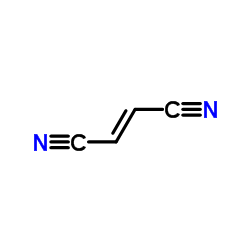Aneuploidy in Drosophila, IV. Inhalation studies on the induction of aneuploidy by nitriles.
C Osgood, M Bloomfield, S Zimmering
文献索引:Mutat. Res. 259(2) , 165-76, (1991)
全文:HTML全文
摘要
The Drosophila ZESTE system was used to monitor the induction of sex chromosome aneuploidy following inhalation exposure of adult females to four nitriles: acetonitrile, propionitrile, acrylonitrile and fumaronitrile. Acetonitrile and propionitrile were highly effective aneuploidogens, inducing both chromosome loss and chromosome gain following brief exposures to low concentrations of these chemicals, and these nitriles also induced rapid paralysis. Acrylonitrile-induced chromosome loss only but did not induce paralysis. Fumaronitrile, in contrast with the results reported in yeast, was ineffective in inducing chromosome loss or gain. Virtually all exceptional offspring induced by acetonitrile and propionitrile were recovered in the first sampled eggs, corresponding to treated mature oocytes. Additionally, the time interval between treatment and sampling was shown to be important, suggesting rapid loss or detoxification of the nitriles. Genetic analysis demonstrated that most aneuploids resulted from induced segregation errors during the first division of meiosis. Cold treatments were found to be ineffective in enhancing the effects of acetonitrile, suggesting important differences between the Drosophila and yeast aneuploidy detection systems. Possible mechanisms by which nitriles may disrupt chromosome segregation in Drosophila oocytes are considered.
相关化合物
| 结构式 | 名称/CAS号 | 分子式 | 全部文献 |
|---|---|---|---|
 |
反丁烯二腈
CAS:764-42-1 |
C4H2N2 |
|
Effect of dosing vehicle on the toxicity and metabolism of u...
1995-01-01 [J. Appl. Toxicol. 15(5) , 411-20, (1995)] |
|
Ultrafast excited state dynamics of the perylene radical cat...
2006-06-22 [J. Phys. Chem. A 110(24) , 7547-53, (2006)] |
|
η1-Allylpalladium complexes with a tridentate PNP ligand wit...
2012-10-28 [Dalton Trans. 41(40) , 12490-500, (2012)] |
|
Bringing nitrilase sequences from databases to life: the sea...
2016-03-01 [Appl. Microbiol. Biotechnol. 100 , 2193-202, (2016)] |
|
The development of a novel strategy for the microbial treatm...
1995-06-01 [Biodegradation 6(2) , 93-107, (1995)] |